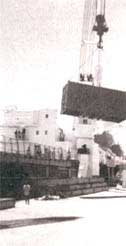Frozen details
Frozen details

INDIA has launched a series of new studies of lake sediments in Antarctica to understand the climatic conditions across many centuries in the icy continent. Announcing this at Mormugao port in Goa, the latest Indian scientific team to return from an Antarctica expedition said that it has also taken up the task of establishing a seismic station for recording earthquake signals in that part of the globe. The team also brought back some 250 tonnes of waste cleared from old Indian food dumps.
Laser heterodyne experiments - to study the upper atmosphere - are meant to study the ozone content. Team leader Arun Chaturvedi, a geologist, said that experiments in this field are "very sophisticated" and liquid nitrogen needed for this is, for the first time, being produced in Antarctica itself. "Considering the climatic conditions, it was a big achievement on this expedition, Chaturvedi added. Using the experiment, scientists from the Indian Meteorological Department studied the growth of the ozone hole over Antarctica. "We can confirm that more damage has been done to the ozone hole," said Chaturvedi.
Every five centimetre of ice on Antarctica covers an average of one year's record, say scientists, 'They hint that the oil resources of the area might be a major attraction for countries across the globe, though all forms of mining have been banned for the next five decades. "After that, we don't know what will happen," they say.
"The Antarctic is one of the best places to study what's happening to our planet - in terms of the ozone hole, cosmic rays, the undisturbed paleoclimate, monitoring earthquake signals. It is one of the drives that controls our monsoons as well," said Erlich De Sa, director National Institute of Oceanography.







